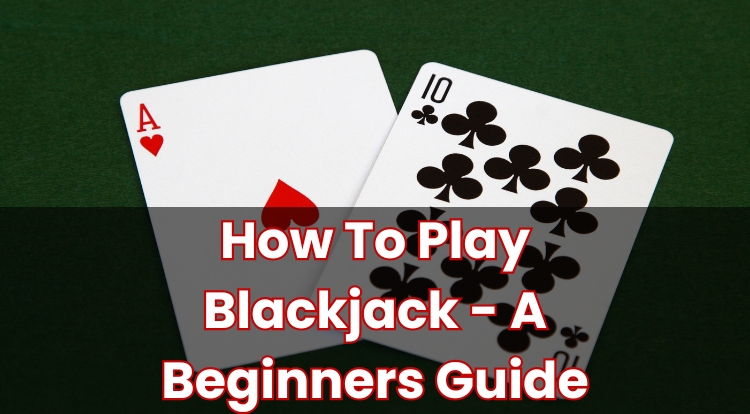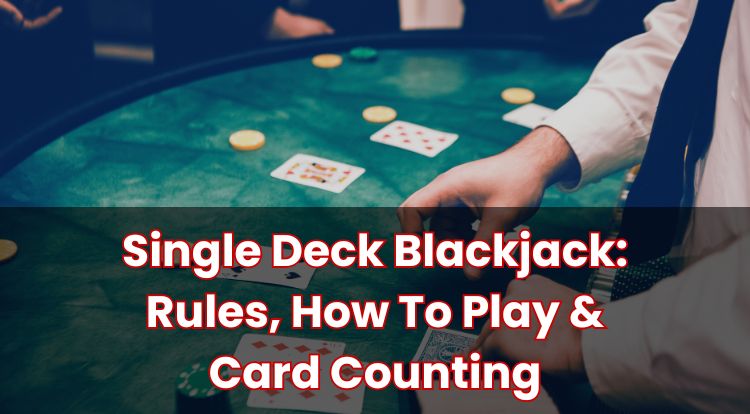What Is Soft 17 in Blackjack? Meaning, Rules & House Edge
Blackjack might look simple at first, but certain terms and table rules can catch new players off guard. “Soft 17” is one of the most common, and it shapes how a round unfolds.
If you have ever wondered why blackjack rules differ between tables, or why the same game can feel slightly different online and in person, understanding soft 17 could be a helpful place to start.
Below, you will find what soft 17 means, why some casinos handle it differently, and how those choices could potentially affect the house edge and your decisions at the table. Read on to learn more.
What Does Soft 17 Mean in Blackjack?
A “soft 17” is any hand totalling seventeen that includes an Ace counted as eleven. An Ace and a six is the clearest example, but an Ace, three, and three also qualifies. What makes it “soft” is the flexibility: if you draw and the total would exceed 21, the Ace can switch to a value of one, keeping the hand in play.
This flexibility matters because it gives the hand room to improve without an immediate bust. You will also see soft 17 mentioned in the dealer’s rules. Some tables require the dealer to stand on soft 17, while others require the dealer to take another card. The table layout or game information panel will usually state this clearly.
Players should always remember to gamble responsibly and within their means- never wager more than you can afford to lose.
How Is a Soft 17 Different From a Hard 17?
A soft 17 is flexible because the Ace can still count as eleven; a hard 17 is not. A hard 17 does not allow the Ace to be counted as eleven without going over 21. Hands like ten and seven are hard 17s. So is a three-card total such as Ace, six, and ten, where the Ace must be counted as one to avoid exceeding 21.
This difference affects how both players and dealers approach the hand. Soft totals invite more aggressive decisions in the right spots, because the Ace provides a safety net. Hard totals offer no such buffer.
Why Do Casinos Have Different Soft 17 Rules?
Casinos adjust soft 17 rules to shape game pace, manage risk, and set a house edge that fits their overall mix of tables. Requiring the dealer to hit on soft 17 creates a slightly tougher game for the player; standing on soft 17 makes it a touch more favourable.
Online lobbies often carry several versions of blackjack side by side. The dealer’s soft 17 rule is part of that variety. It is usually shown on the table felt, on-screen next to the betting area, or in the help section.
How Does the Dealer Playing on Soft 17 Affect the House Edge?
If the dealer must hit a soft 17, they have more chances to improve to totals like 18, 19, or 20. Over many hands, that nudges the house edge higher. In six or eight-deck games, switching from “dealer stands on soft 17” to “dealer hits on soft 17” typically adds about 0.2 percentage points to the house edge. For example, a 0.5% edge can become roughly 0.7%.
That difference might feel small in a single session, but it is significant over time. You will usually find the dealer’s soft 17 rule listed alongside other key details such as decks in use, payout for blackjack, and whether doubling after splitting is allowed.
Soft 17 Rules in UK Blackjack Games
In UK blackjack, you will encounter both formats. Tables that read “Dealer stands on soft 17” play slightly more favourably for the player than those that state “Dealer hits on soft 17.” This wording is typically printed on the felt or shown in the game interface.
You will also notice other table variables, such as the number of decks and the minimum and maximum bets in pounds sterling. Several small rules can interact. For instance, an eight-deck game where the dealer hits soft 17 and doubling after splitting is restricted will not play the same as a six-deck game where the dealer stands and more doubling options are available.
Once you can spot those differences quickly, the hand examples make more sense at a glance.
Examples of Soft 17 Hands
A soft 17 only needs one Ace counted as eleven and other cards totalling six. Common shapes include:
- Ace + six
- Ace + three + three
- Ace + two + four
- Ace + Ace + five, where one Ace counts as eleven and the other as one
In each case, the Ace can drop to one if another card would otherwise push the total past 21. That is what keeps the hand “soft.”
Should You Hit or Stand on Soft 17?
Because a soft 17 cannot bust with a single additional card, many strategy charts recommend playing it actively. In practice, that often means:
- Hitting when the dealer shows stronger upcards, as the hand needs to improve.
- Doubling down against certain weaker dealer upcards, if the table allows doubling on soft totals. With Ace-six, doubling against dealer 3 through 6 is a common recommendation in multi-deck games.
Standing on soft 17 is rare in standard strategy because the hand has room to grow and offers protection if the next card is high. Table rules can adjust these choices at the edges. For example, some games restrict doubling on soft hands or after splits, which removes an option and tilts the decision back towards hitting.
Impact of Soft 17 Rules on Player Decisions
When the dealer hits soft 17, the dealer’s average outcome rises slightly. That shift changes the value of close decisions. Doubling soft 17 in the right spots becomes more important when permitted, and marginal stands elsewhere tend to lose ground. When the dealer stands on soft 17, there are fewer dealer improvements to 18 or higher, which makes holding totals like 17 or 18 more competitive.
Soft hands also connect to other rule points. The ability to double on soft totals, double after splitting, or resplit Aces can all influence how much edge a player can recover through optimal play. The dealer’s soft 17 rule sits within that web of rules, so reading the summary on the table could be useful.
Explore Blackjack Games Online
If you want to play online, we offer a mix of blackjack tables that clearly show the dealer’s soft 17 rule, the number of decks, and the bet limits in pounds sterling. You can choose between live-dealer rooms and fast digital tables, with on-screen help sections that explain the rules and payouts for each game.
New to blackjack? You will find guides that cover the essentials, plus variants that keep the core rules but change small details such as whether the dealer hits or stands on soft 17. Registration is straightforward, and our UK support team can answer questions before or during play.
Pick a table that suits your preferences, check the rules display, and enjoy a well-regulated way to experience blackjack online.
**The information provided in this blog is intended for educational purposes and should not be construed as betting advice or a guarantee of success. Always gamble responsibly.
*All values (Bet Levels, Maximum Wins etc.) mentioned in relation to these games are subject to change at any time. Game features mentioned may not be available in some jurisdictions.




